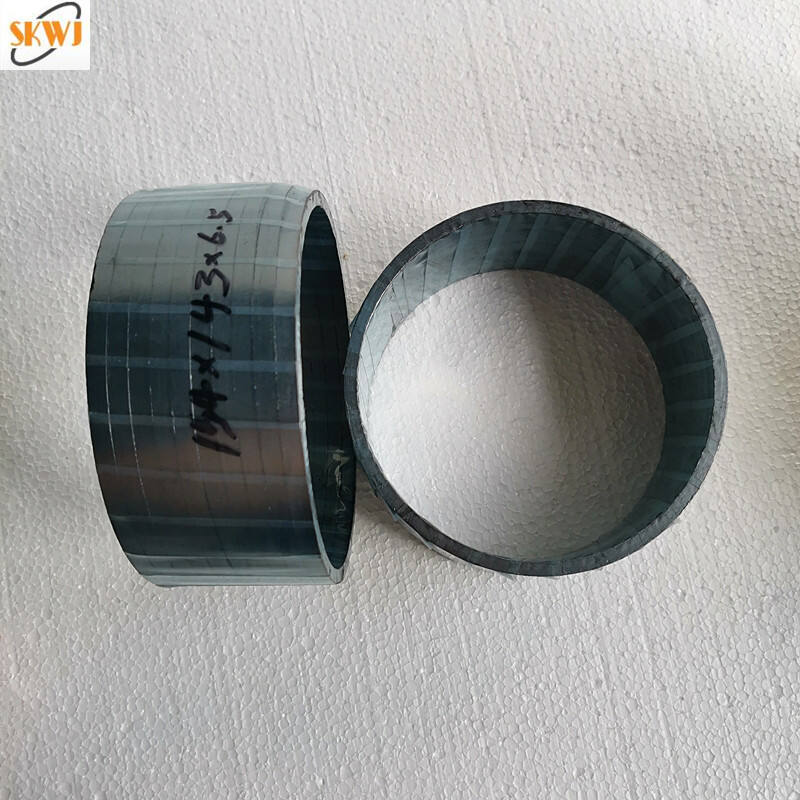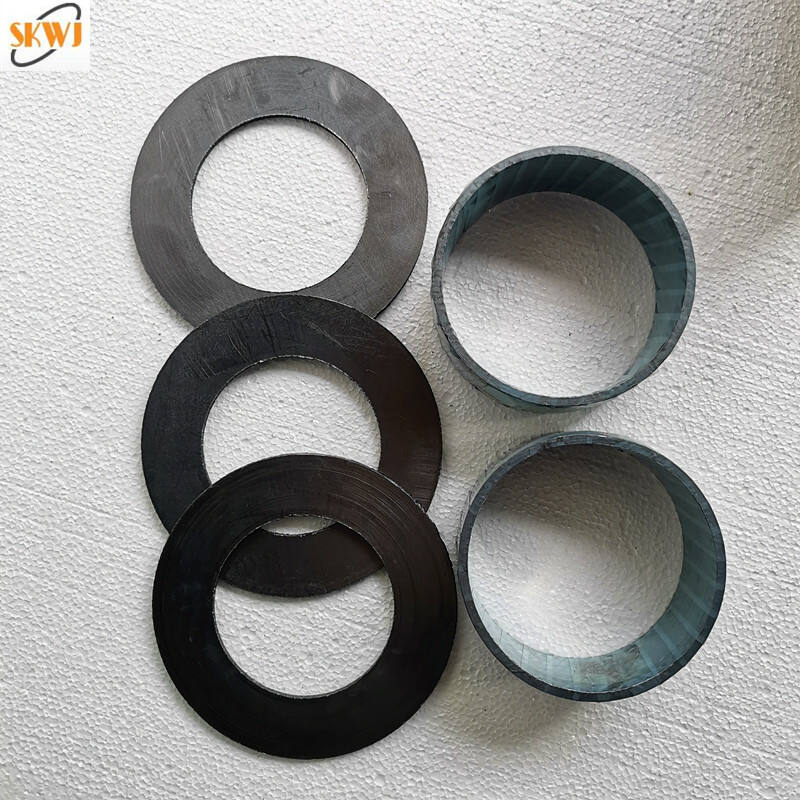Understanding the Power of Modern Industrial Sealing Solutions
In the world of industrial sealing and containment, graphite gaskets have emerged as a cornerstone technology, revolutionizing how industries manage high-temperature and high-pressure applications. These specialized sealing components represent the intersection of material science and practical engineering, offering unique properties that make them indispensable in various industrial settings. From petrochemical plants to nuclear facilities, graphite gaskets play a crucial role in ensuring safe and efficient operations.
The fundamental composition of a graphite gasket involves expanded graphite material, compressed and formed into specific shapes to create reliable seals between mating surfaces. This seemingly simple yet sophisticated component has transformed industrial sealing solutions, particularly in environments where traditional gasket materials would fail under extreme conditions.
The Composition and Manufacturing of Graphite Gaskets
Material Structure and Properties
At its core, a graphite gasket consists of expanded graphite flakes that have been processed and compressed into a dense, uniform material. The unique layered structure of graphite provides exceptional thermal conductivity and chemical resistance. The manufacturing process begins with natural graphite that undergoes an expansion treatment, creating a material with increased surface area and enhanced sealing capabilities.
The expanded graphite is then compressed under controlled conditions, forming sheets or specific shapes that maintain structural integrity under varying pressures and temperatures. This process results in a gasket material that exhibits remarkable resilience and adaptability to different sealing requirements.
Manufacturing Techniques and Quality Control
Modern graphite gasket production employs sophisticated manufacturing techniques to ensure consistent quality and performance. The process involves careful control of density, thickness, and material purity. Advanced compression methods create gaskets with optimal density distribution, crucial for maintaining seal integrity under dynamic conditions.
Quality control measures include rigorous testing for density, compressibility, and chemical composition. Each graphite gasket undergoes careful inspection to verify dimensional accuracy and surface finish, ensuring reliable performance in critical applications.

Key Applications and Industry Uses
High-Temperature Industrial Applications
Graphite gaskets excel in environments where temperatures exceed the capabilities of conventional sealing materials. In steam systems and heat exchangers, these gaskets maintain their integrity at temperatures up to 850°C under oxidizing conditions, and even higher in non-oxidizing environments. This remarkable temperature resistance makes them ideal for power generation facilities and chemical processing plants.
The material's ability to withstand thermal cycling while maintaining seal integrity has made graphite gaskets essential in applications where temperature fluctuations are common. This includes boiler systems, furnace doors, and exhaust system components.
Chemical Processing and Corrosive Environments
The chemical inertness of graphite gaskets makes them particularly valuable in chemical processing industries. They resist attack from most acids, alkalies, and organic compounds, providing reliable sealing in aggressive chemical environments. This chemical stability ensures long-term performance and reduces the need for frequent replacements.
In petrochemical facilities, graphite gaskets serve critical roles in containing various process fluids and gases. Their resistance to hydrocarbon-based materials and ability to maintain sealing integrity under varying chemical conditions makes them indispensable in these applications.
Performance Advantages and Benefits
Thermal and Mechanical Stability
One of the primary advantages of graphite gaskets is their exceptional thermal stability. Unlike elastomeric or fiber-based gaskets, graphite maintains its mechanical properties across a wide temperature range. This stability prevents thermal degradation and ensures consistent sealing performance even during rapid temperature changes.
The material's natural lubricity reduces friction during assembly and disassembly, minimizing damage to flanges and making maintenance operations more efficient. This characteristic also contributes to better load distribution across the sealing surface.
Long-Term Cost Benefits
While the initial cost of graphite gaskets may be higher than some alternatives, their long-term economic benefits are substantial. The extended service life and reduced maintenance requirements translate into lower total ownership costs. Facilities using graphite gaskets typically experience fewer shutdowns for gasket replacement and reduced product loss due to seal failures.
The material's resistance to creep and stress relaxation ensures maintained bolt load over time, reducing the need for re-torquing and maintenance interventions. This reliability factor significantly impacts operational efficiency and maintenance scheduling.
Installation and Maintenance Best Practices
Proper Installation Techniques
Successful implementation of graphite gaskets requires careful attention to installation procedures. Proper alignment, clean mating surfaces, and correct bolt torquing sequences are essential for optimal performance. Technicians should follow manufacturer-specified torque values and tightening patterns to ensure uniform compression and proper sealing.
Surface preparation plays a crucial role in gasket performance. Flange faces must be clean, free from damage, and properly aligned. The use of appropriate tools and careful handling during installation prevents damage to the gasket material.
Monitoring and Maintenance Strategies
Regular inspection and monitoring of graphite gasket installations help identify potential issues before they become critical. This includes periodic checks for compression set, visual inspection for signs of degradation, and monitoring of operating parameters that might affect gasket performance.
Implementing a comprehensive maintenance program that includes scheduled inspections and replacement intervals helps maximize the service life of graphite gaskets while ensuring reliable system operation.
Environmental Impact and Sustainability
Environmental Benefits
Graphite gaskets contribute to environmental protection by providing reliable sealing that prevents emissions and leaks of potentially harmful substances. Their durability and long service life reduce waste associated with frequent replacements of less durable gasket materials.
The manufacturing process for graphite gaskets typically has a lower environmental impact compared to synthetic materials, and the material itself is recyclable, supporting sustainable industrial practices.
Future Developments and Trends
Ongoing research continues to improve graphite gasket technology, focusing on enhanced performance characteristics and environmental sustainability. New manufacturing techniques and material combinations are being developed to extend service life and expand application possibilities.
The industry is moving toward more environmentally conscious solutions, with graphite gaskets playing a key role in reducing industrial emissions and improving overall system efficiency.
Frequently Asked Questions
How long do graphite gaskets typically last?
The service life of graphite gaskets varies depending on operating conditions, but they typically last several years in proper applications. Under optimal conditions and with correct installation, they can maintain effective sealing for 5-10 years or more, significantly longer than many traditional gasket materials.
Can graphite gaskets be reused?
While it's technically possible to reuse graphite gaskets, it's not recommended for critical applications. The material may have taken a compression set and could have microscopic damage that would compromise its sealing ability. Always install new gaskets during maintenance to ensure maximum reliability.
What temperature range can graphite gaskets handle?
Graphite gaskets can operate effectively from cryogenic temperatures up to 850°C in oxidizing environments and up to 3000°C in non-oxidizing conditions. This exceptional temperature range makes them ideal for high-temperature applications where other materials would fail.






